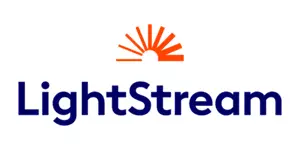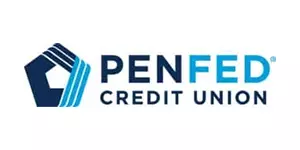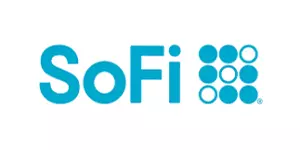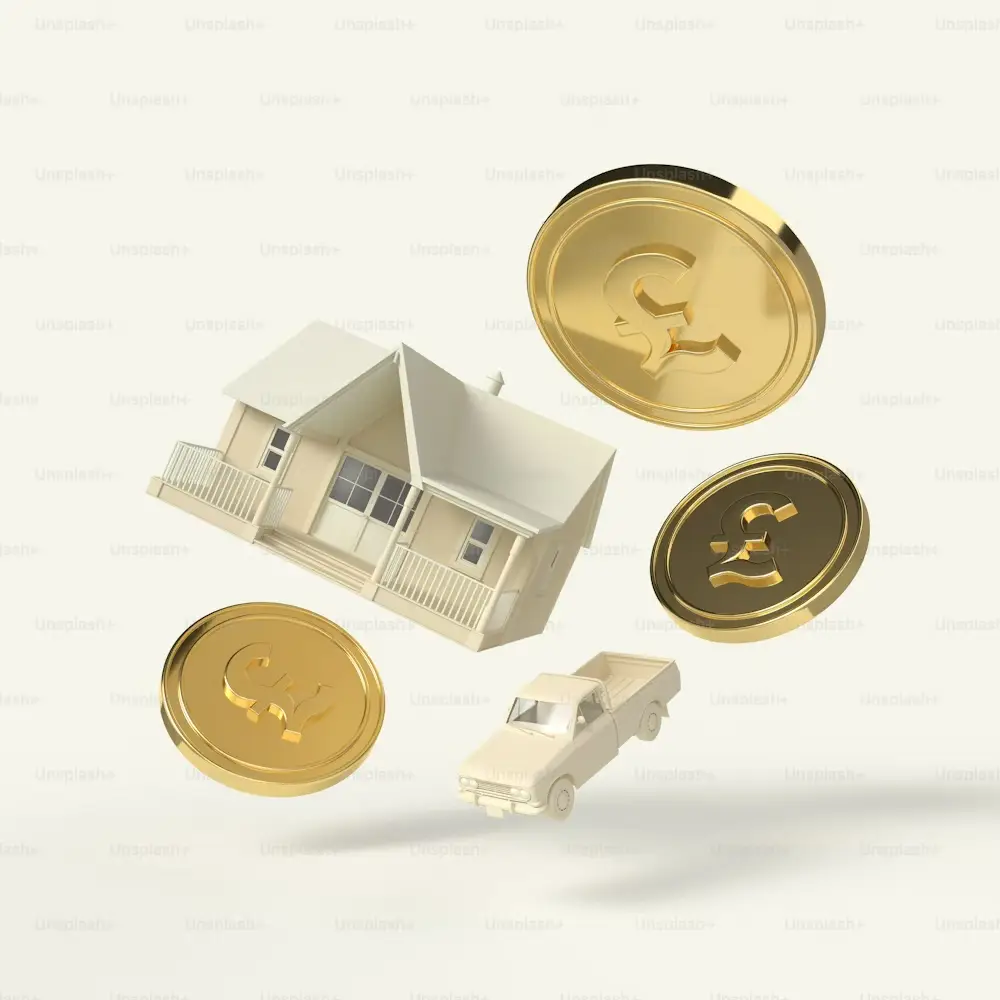Small quick loans, also known as short-term or payday loans, are designed to provide borrowers with immediate access to a small amount of money to cover urgent expenses. Here’s what you need to know about these types of loans:
- Fast Application Process: Small quick loans typically have a streamlined application process that can be completed online or in-person. Borrowers are usually required to provide basic personal and financial information, such as identification, proof of income, and bank account details.
- Quick Approval: One of the key features of small quick loans is their fast approval process. Many lenders offer instant or same-day approval, allowing borrowers to receive funds within a short period, often within hours of applying.
- Small Loan Amounts: These loans are typically for small amounts, ranging from a few hundred to a few thousand pounds. The exact loan amount available to borrowers depends on factors such as income, credit history, and the lender’s policies.
- Short Repayment Period: Small quick loans usually have short repayment terms, often ranging from a few weeks to a few months. Borrowers are required to repay the loan in full, along with any applicable fees and interest, by the due date.
- High Interest Rates: Due to their short-term nature and quick accessibility, small quick loans often come with higher interest rates compared to traditional loans. Borrowers should carefully review the terms and conditions of the loan, including the APR (annual percentage rate), to understand the total cost of borrowing.
- Accessible to Borrowers with Poor Credit: Many lenders offering small quick loans do not require a perfect credit score for approval. Instead, they may consider other factors such as income and employment status. This makes these loans accessible to borrowers with less-than-perfect credit histories.
While small quick loans can provide immediate financial relief in emergencies, borrowers should exercise caution and borrow responsibly. It’s essential to consider the affordability of repayments and explore alternative options, such as budgeting or seeking assistance from friends and family, before taking out a small quick loan. Additionally, borrowers should only borrow what they need and can afford to repay to avoid falling into a cycle of debt.
Small Loans
Small loans refer to relatively modest amounts of money borrowed from a lender for various purposes. These loans are typically for short-term needs and can range from a few hundred to a few thousand pounds, depending on the lender and the borrower’s financial circumstances. Here are some key characteristics of small loans:

- Loan Amount: Small loans usually involve borrowing smaller amounts compared to traditional loans, making them suitable for covering minor expenses or emergencies. The exact loan amount available may vary based on factors such as the borrower’s income, credit history, and the lender’s policies.
- Short Repayment Period: Small loans often come with short repayment terms, typically ranging from a few weeks to a few months. Borrowers are required to repay the loan in full, along with any applicable fees and interest, by the agreed-upon due date.
- Quick Access to Funds: Many lenders offering small loans provide quick approval and funding processes, allowing borrowers to access funds within a short period, often on the same day or within a few business days of applying.
- Flexible Use: Small loans can be used for various purposes, including unexpected expenses, medical bills, car repairs, home improvements, or consolidating debt. Borrowers have the flexibility to use the funds as needed, depending on their financial priorities.
- Accessible to Borrowers with Different Credit Profiles: While some lenders may require a good credit score for approval, others offer small loans to borrowers with less-than-perfect credit histories. These lenders may consider other factors such as income, employment status, and debt-to-income ratio when assessing loan applications.
- Interest Rates and Fees: Due to their short-term nature and quick accessibility, small loans may come with higher interest rates and fees compared to traditional loans. Borrowers should carefully review the terms and conditions of the loan, including the APR (annual percentage rate), to understand the total cost of borrowing.
Overall, small loans can provide a convenient solution for managing unexpected expenses or temporary financial challenges. However, borrowers should borrow responsibly, considering their ability to repay the loan on time, and explore alternative options before taking out a small loan.
Small loans with low Interest
Small loans with low interest rates are beneficial for borrowers looking to minimize the cost of borrowing while obtaining funds for various needs. These loans typically involve borrowing smaller amounts of money for short-term periods, with the advantage of lower interest rates compared to other types of loans. Here are some key points about small loans with low interest:
- Affordability: Low-interest small loans are more affordable for borrowers, as they incur lower interest charges over the loan term. This makes them suitable for individuals seeking to minimize interest costs and manage their finances effectively.
- Flexible Repayment Terms: Many lenders offering small loans with low interest rates provide flexible repayment terms to borrowers. This may include customizable repayment schedules and the option to repay the loan early without incurring prepayment penalties.
- Quick Approval and Funding: Despite offering low interest rates, many lenders of small loans prioritize quick approval and funding processes. Borrowers can often access funds promptly, making these loans suitable for addressing urgent financial needs or emergencies.
- Accessible to Various Borrowers: Small loans with low interest rates may be available to borrowers with different credit profiles, including those with excellent, good, or fair credit scores. Some lenders may also consider factors beyond credit history, such as income and employment status, when assessing loan applications.
- Use for Various Purposes: Borrowers can use small loans with low interest rates for various purposes, including home improvements, car repairs, medical expenses, debt consolidation, or covering unexpected bills. The flexibility in usage allows borrowers to address their financial needs efficiently.
- Comparison Shopping: To find the best small loans with low interest rates, borrowers should compare offers from multiple lenders. This involves evaluating factors such as the interest rate, APR, fees, repayment terms, and eligibility criteria to choose the most suitable option.
Overall, small loans with low interest rates offer borrowers a cost-effective means of obtaining funds for short-term needs. However, it’s essential for borrowers to assess their financial situation carefully, borrow responsibly, and ensure they can comfortably afford the loan repayments before proceeding with the application.
Small money Loans
Small money loans typically refer to borrowing relatively small amounts of money, often ranging from a few hundred to a few thousand dollars, to address immediate financial needs. These loans are designed to provide quick access to funds for short-term expenses or emergencies. Here are some key features and considerations regarding small money loans:
- Short-Term Nature: Small money loans usually have short repayment periods, ranging from a few weeks to a few months. They are intended to be repaid quickly, which is why they are often referred to as short-term loans.
- Quick Approval: Many lenders offering small money loans prioritize quick approval processes, allowing borrowers to access funds promptly. Online lenders and payday loan providers, in particular, may offer expedited approval and funding procedures, sometimes within the same day or even within hours of application.
- Higher Interest Rates: Due to their short-term nature and the relatively small amounts borrowed, small money loans often come with higher interest rates compared to traditional long-term loans. Borrowers should be aware of the interest rates and fees associated with these loans and ensure they understand the total cost of borrowing.
- Flexible Eligibility Criteria: Some lenders offering small money loans may have more relaxed eligibility requirements compared to traditional banks or credit unions. While credit history and income are still factors considered by lenders, individuals with less-than-perfect credit or limited income may still qualify for these loans.
- Various Uses: Small money loans can be used for a variety of purposes, including covering unexpected expenses, paying for car repairs, addressing medical bills, or managing temporary cash flow shortages. However, they should not be used as a long-term solution for ongoing financial issues.
- Comparison Shopping: It’s essential for borrowers to shop around and compare offers from multiple lenders before choosing a small money loan. By comparing interest rates, fees, repayment terms, and lender reputations, borrowers can find the most suitable loan option for their needs while minimizing costs.
- Risk of Debt Trap: While small money loans can provide temporary relief for financial emergencies, borrowers should be cautious not to rely on them excessively. Taking out multiple small loans or rolling over existing loans can lead to a cycle of debt and financial difficulties.

Overall, small money loans can be a convenient option for individuals facing short-term financial challenges, but they should be used responsibly and repaid promptly to avoid long-term financial consequences. Borrowers should carefully assess their financial situation and explore alternatives before taking out a small money loan.
Small loans low interest Rates
Small loans with low interest rates can be a valuable financial tool for individuals looking to borrow a modest amount of money while minimizing the overall cost of borrowing. Here are some key points to consider about small loans with low interest rates:
- Interest Rates: Low-interest small loans typically come with relatively favorable annual percentage rates (APRs) compared to higher-interest loans. The APR represents the total cost of borrowing, including interest and any applicable fees, expressed as a percentage of the loan amount on an annual basis.
- Credit Score: Borrowers with good to excellent credit scores are more likely to qualify for small loans with low interest rates. Lenders typically offer their most competitive rates to borrowers with a strong credit history, as they pose a lower risk of default.
- Loan Amounts: Small loans with low interest rates are generally available for borrowing smaller amounts of money, typically ranging from a few hundred to a few thousand dollars. These loans are suitable for covering short-term expenses or addressing unexpected financial needs.
- Repayment Terms: Low-interest small loans often come with flexible repayment terms, allowing borrowers to repay the loan over a period of months or years. Longer repayment terms may result in lower monthly payments but may also lead to higher overall interest costs.
- Lender Options: Banks, credit unions, online lenders, and peer-to-peer lending platforms are common sources of small loans with low interest rates. Borrowers should shop around and compare offers from multiple lenders to find the most competitive rates and terms.
- Secured vs. Unsecured: Small loans may be secured or unsecured. Secured loans require collateral, such as a vehicle or savings account, to back the loan, which can result in lower interest rates. Unsecured loans do not require collateral but may have slightly higher interest rates to offset the increased risk to the lender.
- Considerations: While low-interest small loans can be an attractive option for borrowers, it’s essential to consider the total cost of borrowing, including any origination fees, application fees, or prepayment penalties. Borrowers should also assess their ability to repay the loan comfortably within the specified term.
Overall, small loans with low interest rates offer an affordable borrowing option for individuals with good credit who need access to funds for short-term financial needs. By comparing offers from different lenders and understanding the terms and conditions of the loan, borrowers can secure the most favorable financing option for their situation.
How much will a small loan cost?
The cost of a small loan can vary depending on several factors, including the loan amount, the interest rate, any fees associated with the loan, and the repayment term. Here’s a breakdown of the potential costs associated with a small loan:
- Loan Amount: The amount you borrow will directly impact the total cost of the loan. Generally, smaller loan amounts will result in lower overall costs compared to larger loans.
- Interest Rate: The interest rate, expressed as an annual percentage rate (APR), determines the cost of borrowing the money. A lower interest rate will result in lower overall costs, while a higher interest rate will lead to higher costs over the life of the loan.
- Fees: Some lenders may charge fees for processing the loan application, such as origination fees or administrative fees. These fees can vary among lenders and may add to the total cost of the loan.
- Repayment Term: The length of time you have to repay the loan will also affect the total cost. Generally, longer repayment terms result in lower monthly payments but may lead to higher overall costs due to accruing interest over a more extended period.
To estimate the total cost of a small loan, you can use an online loan calculator or consult with the lender directly. Be sure to review the loan terms carefully, including the interest rate, fees, and repayment schedule, to understand the full cost of borrowing before accepting the loan offer. Additionally, consider your ability to repay the loan comfortably within the specified term to avoid additional fees or penalties.
Fast small Loans
Fast small loans are a convenient financial solution for individuals who need quick access to funds to cover unexpected expenses or emergencies. These loans typically offer a streamlined application process and rapid approval, allowing borrowers to receive the money they need within a short period, often on the same day of application.

Fast small loans may have smaller loan amounts compared to traditional loans, making them suitable for covering minor expenses like car repairs, medical bills, or utility payments. While interest rates and repayment terms can vary among lenders, fast small loans are designed to provide borrowers with immediate financial relief without the lengthy approval processes associated with larger loans.
Small unsecured Loans
Small unsecured loans are financial products that do not require collateral from the borrower. Unlike secured loans, where an asset like a house or a car is used as security against the loan amount, unsecured loans are granted solely based on the borrower’s creditworthiness and ability to repay.
These loans are typically for smaller amounts and shorter terms compared to secured loans, making them suitable for covering immediate expenses or addressing short-term financial needs. Since there is no collateral involved, lenders may assess the borrower’s credit score, income, employment status, and other factors to determine eligibility and interest rates. Small unsecured loans offer flexibility and convenience for individuals who need quick access to funds without risking their assets. However, they may come with higher interest rates compared to secured loans due to the increased risk for lenders.
What are the pros and cons of smaller loans?
Smaller loans, also known as short-term or small-dollar loans, offer various benefits and drawbacks depending on the individual’s financial situation and needs. Here are some pros and cons of smaller loans:
Pros:
- Quick access to funds: Smaller loans typically have faster approval processes, allowing borrowers to access funds quickly, often within the same day or next business day.
- Flexible repayment terms: Many lenders offer flexible repayment options for smaller loans, allowing borrowers to choose repayment periods that suit their budget and financial situation.
- No collateral required: Most smaller loans are unsecured, meaning borrowers don’t need to provide collateral such as a house or car to qualify for the loan.
- Useful for emergencies: Smaller loans can be invaluable in emergencies, such as unexpected car repairs, medical bills, or home repairs, providing immediate financial relief when needed.
- Builds credit: Successfully repaying a smaller loan can help improve your credit score, demonstrating responsible borrowing behavior to lenders.
Cons:
- Higher interest rates: Smaller loans often come with higher interest rates compared to larger loans, which can increase the overall cost of borrowing.
- Limited loan amounts: Smaller loans typically have lower maximum loan amounts compared to larger loans, which may not be sufficient for significant expenses or purchases.
- Short repayment terms: Smaller loans usually have shorter repayment periods, requiring borrowers to repay the loan within a few weeks or months, potentially leading to higher monthly payments.
- Risk of debt cycle: If borrowers rely too heavily on smaller loans to cover ongoing expenses or emergencies, they may become trapped in a cycle of debt, especially if they struggle to repay the loan on time.
- Eligibility requirements: Some lenders may have strict eligibility criteria for smaller loans, including minimum credit score requirements, income verification, and employment history, which could exclude some borrowers from accessing funds.
Overall, smaller loans can be a useful financial tool for addressing short-term needs and emergencies, but borrowers should carefully consider the terms and costs associated with these loans before applying. It’s essential to borrow responsibly and only take out a loan if you can afford to repay it on time.
Small loans Company
A small loans company typically specializes in providing short-term loans to individuals or businesses in need of quick access to funds. These companies offer loans with relatively low principal amounts, often ranging from a few hundred to a few thousand dollars, and short repayment terms, typically ranging from a few weeks to a few months.

Small loans companies may operate online or through physical branches, and they may offer various types of loans, including payday loans, installment loans, or lines of credit. These loans are usually unsecured, meaning borrowers don’t need to provide collateral to qualify, although interest rates may be higher compared to traditional bank loans.
The process of obtaining a loan from a small loans company is often streamlined, with quick approval decisions and fast funding, sometimes within the same day of application. However, borrowers should carefully review the terms and conditions of the loan, including interest rates, fees, and repayment terms, to ensure they understand the total cost of borrowing and can afford to repay the loan on time.
It’s essential for borrowers to choose a reputable small loans company that is licensed and regulated by relevant authorities to ensure fair lending practices and consumer protection. Additionally, borrowers should borrow responsibly and only take out a loan if they have a genuine need and can afford to repay it according to the agreed-upon terms.
What types of small loans are there?
There are several types of small loans available to borrowers, each designed to meet specific financial needs and circumstances. Here are some common types of small loans:
- Payday Loans: Payday loans are short-term loans typically due on the borrower’s next payday. These loans are usually for small amounts, ranging from a few hundred to a few thousand dollars. They are designed to cover unexpected expenses or bridge financial gaps until the next paycheck.
- Installment Loans: Installment loans allow borrowers to repay the loan amount, along with interest, in fixed monthly installments over a specified period. These loans are suitable for larger expenses or when borrowers need more time to repay the borrowed amount.
- Personal Loans: Personal loans are unsecured loans that borrowers can use for various purposes, such as debt consolidation, home improvements, or medical expenses. They typically have fixed interest rates and repayment terms, making it easier for borrowers to budget their monthly payments.
- Lines of Credit: A line of credit is a flexible borrowing option that allows borrowers to access funds up to a predetermined credit limit. Borrowers can withdraw funds as needed and only pay interest on the amount borrowed. Lines of credit are suitable for managing fluctuating expenses or covering emergencies.
- Cash Advances: Cash advances are short-term loans provided by credit card issuers, allowing cardholders to withdraw cash against their credit card limit. Cash advances often come with high-interest rates and fees and should be used sparingly.
- Title Loans: Title loans allow borrowers to use their vehicle’s title as collateral to secure a loan. These loans are typically short-term and come with high-interest rates. Borrowers risk losing their vehicle if they fail to repay the loan as agreed.
Before choosing a small loan type, borrowers should carefully consider their financial needs, repayment ability, and the terms and conditions of the loan to ensure they select the most suitable option. Additionally, it’s essential to compare interest rates, fees, and repayment terms from multiple lenders to find the best loan offer.
Small amount Loans
Small amount loans, also known as microloans or short-term loans, are typically for relatively modest sums of money, often ranging from a few hundred to a few thousand dollars. These loans are designed to provide borrowers with quick access to funds to cover immediate financial needs or unexpected expenses. Here are some key characteristics of small amount loans:
- Short-Term Repayment: Small amount loans usually have short repayment terms, ranging from a few weeks to a few months. Borrowers are required to repay the loan, along with any accrued interest and fees, by the agreed-upon due date.
- Quick Approval and Disbursement: Many lenders offering small amount loans provide quick approval decisions and fast funding, often within the same business day. This makes them ideal for addressing urgent financial situations or emergencies.
- Minimal Documentation: Compared to traditional bank loans, small amount loans typically require minimal documentation and paperwork. Borrowers may need to provide basic personal and financial information, such as proof of income and identification, to qualify for the loan.
- Accessible to Borrowers with Various Credit Histories: Some lenders offering small amount loans cater to borrowers with less-than-perfect credit histories. While eligibility criteria may vary depending on the lender, borrowers with poor or no credit may still qualify for these loans.
- Higher Interest Rates: Due to their short-term nature and higher risk profile, small amount loans often come with higher interest rates compared to traditional bank loans. Borrowers should carefully review the terms and conditions, including the interest rate, APR, and any additional fees, before accepting the loan offer.
- Varied Uses: Small amount loans can be used for various purposes, such as covering unexpected medical expenses, car repairs, utility bills, or other emergency costs. Some borrowers may also use these loans to consolidate debt or make essential purchases.
While small amount loans can provide valuable financial assistance when needed, borrowers should exercise caution and ensure they can afford the loan repayment before taking on additional debt. It’s essential to carefully review the loan terms, including the repayment schedule and total cost of borrowing, to make an informed borrowing decision. Additionally, borrowers should explore alternative financing options and seek financial counseling if they’re struggling to manage their finances.
Quick small cash Loans
Quick small cash loans are short-term loans designed to provide borrowers with fast access to funds to cover immediate financial needs or emergencies. These loans typically offer relatively small amounts of money, ranging from a few hundred to a few thousand dollars, and feature quick approval and disbursement processes. Here are some key features of quick small cash loans:
- Fast Approval: Quick small cash loans often come with expedited approval processes, allowing borrowers to receive a decision on their loan application within minutes or hours.
- Rapid Disbursement: Once approved, funds from quick small cash loans are usually disbursed promptly, often within the same business day or even within a few hours, depending on the lender’s policies and the borrower’s banking institution.
- Short-Term Repayment: These loans typically have short repayment terms, ranging from a few weeks to a few months. Borrowers are required to repay the loan, along with any accrued interest and fees, by the agreed-upon due date.
- Minimal Documentation: Compared to traditional bank loans, quick small cash loans often require minimal documentation and paperwork. Borrowers may need to provide basic personal and financial information, such as proof of income and identification, to qualify for the loan.
- Accessible to Borrowers with Various Credit Histories: Some lenders offering quick small cash loans cater to borrowers with less-than-perfect credit histories. While eligibility criteria may vary depending on the lender, borrowers with poor or no credit may still qualify for these loans.
- Higher Interest Rates: Due to their short-term nature and higher risk profile, quick small cash loans often come with higher interest rates compared to traditional bank loans. Borrowers should carefully review the terms and conditions, including the interest rate, APR, and any additional fees, before accepting the loan offer.
- Varied Uses: Quick small cash loans can be used for various purposes, such as covering unexpected medical expenses, car repairs, utility bills, or other emergency costs. Some borrowers may also use these loans to consolidate debt or make essential purchases.
While quick small cash loans can provide valuable financial assistance when needed, borrowers should exercise caution and ensure they can afford the loan repayment before taking on additional debt. It’s essential to carefully review the loan terms, including the repayment schedule and total cost of borrowing, to make an informed borrowing decision. Additionally, borrowers should explore alternative financing options and seek financial counseling if they’re struggling to manage their finances.
How do small loans work?
Small loans typically work by providing borrowers with access to a relatively small amount of money, usually ranging from a few hundred to a few thousand dollars, to be repaid over a short period, often within a few weeks or months. Here’s how small loans generally work:
- Application: Borrowers can apply for small loans online, over the phone, or in person at a lender’s office. The application process typically involves providing personal information, such as name, address, employment details, income, and bank account information.
- Approval: Once the borrower submits their application, the lender evaluates their eligibility based on factors such as credit history, income, and debt-to-income ratio. Some lenders may perform a credit check to assess the borrower’s creditworthiness. If approved, the borrower receives a loan offer outlining the terms and conditions.
- Loan Terms: The loan offer specifies the loan amount, interest rate, repayment term, and any applicable fees. Borrowers should carefully review these terms to understand the total cost of borrowing and repayment schedule.
- Funding: Upon accepting the loan offer, the borrower receives the funds, usually deposited directly into their bank account. Depending on the lender and the borrower’s banking institution, funds may be available on the same day or within a few business days.
- Repayment: Borrowers are required to repay the loan according to the terms outlined in the loan agreement. This typically involves making regular payments, either in fixed installments or as a lump sum, until the loan is fully repaid. Payments may be due weekly, bi-weekly, or monthly, depending on the lender’s policies.
- Fees and Interest: Borrowers may be charged interest and fees in addition to the loan principal. These can include origination fees, late payment fees, and prepayment penalties. The interest rate and fees vary depending on factors such as the borrower’s creditworthiness, the loan amount, and the lender’s policies.
- Credit Impact: Repayment of the small loan can impact the borrower’s credit score. Timely payments can help build or improve credit, while missed or late payments can negatively affect creditworthiness.
Overall, small loans offer a convenient option for individuals in need of quick access to funds for various purposes. However, borrowers should carefully consider the terms and costs associated with the loan and ensure they can afford the repayments before borrowing.
Small personal loans Uk
Small personal loans in the UK are typically unsecured loans that offer borrowers access to a relatively small amount of money, usually ranging from a few hundred to a few thousand pounds. These loans are designed to be repaid over a short to medium term, often ranging from a few months to a couple of years. Here are some key features of small personal loans in the UK:
- Unsecured: Small personal loans in the UK are usually unsecured, meaning they do not require collateral. Borrowers are not required to pledge any assets, such as a car or property, to secure the loan.
- Fixed Repayment Term: These loans typically have a fixed repayment term, meaning borrowers repay the loan in fixed monthly installments over a specified period. The repayment term is agreed upon at the time of taking out the loan.
- Interest Rates: The interest rates on small personal loans can vary depending on factors such as the borrower’s creditworthiness, the loan amount, and the lender’s policies. Interest rates may be fixed or variable, and borrowers with a higher credit score may qualify for lower rates.
- Application Process: Borrowers can apply for small personal loans online, over the phone, or in person at a bank, credit union, or online lender. The application process typically involves providing personal and financial information, including details about income, employment, and existing debts.
- Quick Approval: Many lenders offer quick approval processes for small personal loans, with funds often disbursed within a few days of approval. Some lenders may even offer same-day funding for eligible borrowers.
- Purpose: Small personal loans can be used for various purposes, including covering unexpected expenses, consolidating debt, financing home improvements, or funding a special purchase. However, borrowers should use the loan responsibly and ensure they can afford the repayments.
- Credit Impact: Repayment of a small personal loan can impact the borrower’s credit score. Timely payments can help build or improve credit, while missed or late payments can have a negative effect on creditworthiness.
Overall, small personal loans offer a flexible and convenient financing option for individuals in need of relatively small amounts of money for various purposes. However, borrowers should carefully compare loan offers, understand the terms and conditions, and ensure they can afford the repayments before borrowing.
Low apr small Loans
Low APR (Annual Percentage Rate) small loans are loans with a relatively low interest rate compared to other types of loans. These loans are often sought after by borrowers looking to minimize the cost of borrowing. Here are some key features and considerations regarding low APR small loans:
- Lower Interest Rates: The primary benefit of low APR small loans is that they come with lower interest rates compared to higher APR loans. This can result in lower monthly payments and reduced overall borrowing costs.
- Cost Savings: Borrowers can save money over the life of the loan by securing a low APR. Even a small difference in interest rates can lead to significant savings, especially for long-term loans.
- Better Affordability: Lower interest rates make loan repayments more affordable, allowing borrowers to manage their finances more effectively and avoid financial strain.
- Easier Approval: Some lenders may be more willing to approve borrowers for small loans with low APR, especially if they have a good credit history and meet other eligibility criteria.
- Longer Repayment Terms: Low APR small loans may come with longer repayment terms, spreading out the loan payments over a more extended period. This can further reduce the monthly payment amount and improve affordability.
- Credit Score Impact: Borrowers with a good credit score are more likely to qualify for low APR small loans. Additionally, successfully repaying a low APR loan can positively impact the borrower’s credit score over time.
- Secured vs. Unsecured: Low APR small loans may be available as secured or unsecured loans. Secured loans require collateral, such as a car or savings account, while unsecured loans do not. Secured loans typically offer lower interest rates due to the reduced risk for the lender.
- Comparison Shopping: It’s essential for borrowers to compare loan offers from multiple lenders to find the best APR and terms. Shopping around can help borrowers secure the lowest possible interest rate for their small loan.
- Fees and Charges: In addition to the APR, borrowers should also consider any fees and charges associated with the loan, such as origination fees, late payment fees, or prepayment penalties. These can affect the overall cost of borrowing and should be factored into the decision-making process.
Overall, low APR small loans offer borrowers an opportunity to borrow money at a more affordable rate, but it’s essential to carefully review the terms and conditions of the loan before proceeding to ensure it meets your financial needs and goals.
Small online Loans
Small online loans are a type of personal loan that individuals can apply for and manage entirely online. These loans typically offer relatively small amounts of money, often ranging from a few hundred to a few thousand dollars, and are designed to cover short-term financial needs. Here are some key features of small online loans:
- Convenience: One of the primary advantages of small online loans is their convenience. Borrowers can apply for these loans from the comfort of their own home using a computer, smartphone, or tablet. The entire application process, including submitting documents and signing agreements, can be completed online.
- Fast Approval: Online lenders often provide quick approval decisions for small loans, sometimes within minutes or hours of submitting an application. This rapid turnaround time is ideal for borrowers who need access to funds quickly to cover unexpected expenses or emergencies.
- Minimal Documentation: Small online loans typically require minimal documentation compared to traditional bank loans. Borrowers may need to provide proof of identity, income, and banking information, but the requirements are usually straightforward and easy to fulfill.
- Flexible Terms: Many online lenders offer flexible repayment terms for small loans, allowing borrowers to choose a repayment schedule that aligns with their budget and financial goals. This flexibility can include options for bi-weekly or monthly payments and loan terms ranging from a few months to a few years.
- Accessible to Borrowers with Different Credit Profiles: While some online lenders may require a minimum credit score for approval, others specialize in providing loans to borrowers with less-than-perfect credit. These lenders may consider factors beyond credit scores, such as income and employment history, when evaluating loan applications.
- Transparent Fees and Rates: Reputable online lenders are transparent about the fees and interest rates associated with their loans. Borrowers can review the loan terms and conditions before accepting an offer to understand the total cost of borrowing and any potential fees, such as origination fees or prepayment penalties.
- Direct Deposit: Once approved, funds from a small online loan are typically deposited directly into the borrower’s bank account. This eliminates the need for paper checks or in-person visits to a bank branch, providing added convenience and accessibility.
- Secure Application Process: Online lenders prioritize the security of their customers’ personal and financial information. They use encryption and other security measures to protect sensitive data during the application and transaction process.
Overall, small online loans offer a convenient and accessible borrowing option for individuals who need quick access to funds for various purposes. However, borrowers should carefully review the terms and conditions of any loan offer to ensure it meets their needs and financial circumstances before proceeding with the application.
Small apr Loans
Small APR loans refer to loans with relatively low annual percentage rates (APRs). These loans are designed to offer borrowers favorable interest rates, resulting in lower overall borrowing costs. Here are some key features and benefits of small APR loans:
- Lower Interest Costs: The primary advantage of small APR loans is that they come with lower interest rates compared to other types of loans. This means borrowers pay less in interest over the life of the loan, resulting in lower total borrowing costs.
- Affordability: With lower interest rates, small APR loans are more affordable for borrowers, making them an attractive option for those looking to minimize the cost of borrowing. This affordability can make it easier for borrowers to manage their monthly loan payments and avoid financial strain.
- Flexible Repayment Terms: Many lenders offer flexible repayment terms for small APR loans, allowing borrowers to choose a repayment schedule that fits their budget and financial goals. This flexibility can include options for bi-weekly or monthly payments and loan terms ranging from a few months to several years.
- Access to Funds: Despite their low APRs, small APR loans still provide borrowers with access to the funds they need for various purposes, such as debt consolidation, home improvements, or unexpected expenses. Borrowers can use the loan proceeds to cover immediate financial needs without incurring high-interest charges.
- Improved Credit Score: Timely repayment of a small APR loan can have a positive impact on a borrower’s credit score. By making regular payments on time, borrowers demonstrate responsible financial behavior, which can help improve their creditworthiness over time.
- Transparent Terms: Reputable lenders that offer small APR loans typically provide transparent terms and conditions to borrowers. This includes clearly outlining the interest rate, repayment schedule, fees, and any other relevant loan terms upfront, allowing borrowers to make informed decisions about their borrowing.
- Online Application Process: Many lenders offer small APR loans with an online application process, making it convenient for borrowers to apply from the comfort of their own home. The online application process is typically fast and straightforward, with quick approval decisions and funding options.
Overall, small APR loans are a cost-effective borrowing option for individuals who want to minimize the amount of interest they pay on a loan. However, it’s essential for borrowers to shop around and compare loan offers from multiple lenders to find the best terms and rates that suit their needs and financial situation. Additionally, borrowers should ensure they can afford the monthly loan payments before committing to a loan agreement.
How much can I borrow with a small loan?
The amount you can borrow with a small loan varies depending on several factors, including the lender’s policies, your creditworthiness, and local regulations. Generally, small loans typically range from a few hundred to a few thousand pounds. Here’s a breakdown of the borrowing limits you might encounter:
- Payday Loans: Payday loans are small, short-term loans designed to cover unexpected expenses until your next payday. They typically range from £100 to £1,000, although some lenders may offer higher amounts.
- Short-Term Installment Loans: Short-term installment loans offer slightly larger amounts than payday loans and are repaid over several months. Loan amounts can range from £500 to £5,000, depending on the lender and your financial situation.
- Personal Loans: Personal loans, including unsecured loans, can provide even larger loan amounts. While they may not always be considered “small loans,” some lenders offer personal loans starting from around £1,000 and going up to £25,000 or more, depending on your creditworthiness and income.
- Microloans: Microloans are very small loans, typically ranging from £100 to £1,000, and are often provided by alternative lenders, community organizations, or credit unions. They are commonly used by individuals with limited access to traditional banking services or those who need a small amount of capital for a specific purpose, such as starting a small business.
When considering how much to borrow with a small loan, it’s essential to assess your financial needs carefully and borrow only what you need and can comfortably repay. Additionally, be mindful of the interest rates and fees associated with the loan, as they can significantly impact the total cost of borrowing. Always compare multiple loan offers from different lenders to find the most suitable option for your financial situation.
Small loans usually range from £500 to £3,000, although this can vary depending on the lender’s criteria. Each lender has its own set of conditions for determining whether and how much they will lend you.
The interest rate for a small loan may differ among lenders, so it’s advisable to compare offers to find the most favorable deal. Shopping around allows you to explore various options and select the one that best suits your needs.
Small loans Today
Small loans today are a convenient financial solution for individuals needing quick access to funds. These loans typically involve borrowing a relatively small amount of money, often ranging from a few hundred to a few thousand pounds. They are designed to cover short-term expenses or emergencies and are usually repaid over a short period, commonly within a few months to a year.
Many lenders offer small loans with streamlined application processes, allowing borrowers to apply online and receive funds on the same day or within a short turnaround time. While small loans can provide immediate financial relief, borrowers should carefully consider their repayment capabilities and ensure they can meet the terms and conditions of the loan to avoid falling into further financial strain.
What should I consider before applying for a small loan?
Before applying for a small loan, there are several factors to consider to ensure you make an informed decision:
- Loan Amount: Determine the amount of money you need to borrow. Small loans typically range from a few hundred to a few thousand pounds, so assess your financial needs carefully.
- Interest Rates: Compare interest rates offered by different lenders to find the most competitive option. Lower interest rates can save you money over the life of the loan.
- Fees and Charges: In addition to interest rates, be aware of any fees and charges associated with the loan, such as origination fees, late payment fees, or early repayment fees.
- Repayment Terms: Understand the repayment terms of the loan, including the loan duration and repayment schedule. Ensure that you can comfortably afford the monthly payments within your budget.
- Credit History: Your credit history may impact your eligibility for a small loan and the interest rates you’re offered. Check your credit report beforehand and take steps to improve your credit score if necessary.
- Lender Reputation: Research the reputation of the lender before applying for a loan. Look for reviews and ratings from other customers to ensure they are reputable and trustworthy.
- Loan Purpose: Consider the purpose of the loan and whether it’s necessary. Avoid using small loans for frivolous expenses and focus on essential needs or emergencies.
- Alternatives: Explore alternative financing options, such as borrowing from family or friends, using a credit card, or seeking assistance from local charities or government programs.
Small easy Loans
Small easy loans are typically short-term loans designed to provide borrowers with quick access to a small amount of money. Here are some key features of small easy loans:
- Quick Approval: These loans often have a streamlined application process, allowing borrowers to apply online and receive approval within minutes.
- Minimal Documentation: Unlike traditional loans, small easy loans may require minimal documentation, making the application process faster and more convenient.
- Small Loan Amounts: These loans typically offer small loan amounts, ranging from a few hundred to a few thousand pounds, which are suitable for covering unexpected expenses or emergencies.
- Short Repayment Period: Small easy loans usually have short repayment periods, ranging from a few weeks to a few months. Borrowers are required to repay the loan, along with any interest and fees, by the agreed-upon due date.
- High Interest Rates: Due to the short-term nature and quick approval process, small easy loans often come with higher interest rates compared to traditional loans. Borrowers should be aware of the total cost of borrowing and ensure they can afford the repayments.
- Accessible to Borrowers with Poor Credit: Some lenders offering small easy loans may consider borrowers with poor credit histories. However, these borrowers may face higher interest rates or stricter terms.
- Flexible Use: Small easy loans can be used for various purposes, including covering unexpected expenses, paying bills, or addressing emergencies. However, borrowers should avoid using these loans for unnecessary expenses or non-essential purchases.
Overall, small easy loans can provide a convenient financial solution for individuals in need of quick cash. However, borrowers should carefully consider their financial situation and explore alternative options before taking out a loan to ensure they can afford the repayments and avoid falling into a cycle of debt.
Apply small Loans
To apply for a small loan, you typically need to follow these steps:
- Research Lenders: Start by researching lenders that offer small loans. Look for reputable lenders with positive customer reviews and competitive interest rates.
- Check Eligibility Criteria: Review the eligibility criteria for each lender to ensure you meet the requirements. This may include factors such as minimum age, income requirements, and credit score.
- Gather Required Documents: Collect any documents you may need to support your loan application, such as proof of identity, income verification, and bank statements.
- Compare Loan Options: Compare the loan terms, interest rates, and repayment terms offered by different lenders to find the best option for your needs.
- Submit Application: Once you’ve chosen a lender, complete the online application form with accurate information. Be prepared to provide details about your income, employment status, and financial situation.
- Wait for Approval: After submitting your application, wait for the lender to review and process it. This may take anywhere from a few minutes to a few days, depending on the lender’s process.
- Review Loan Offer: If your application is approved, carefully review the loan offer, including the interest rate, repayment terms, and any fees associated with the loan.
- Sign Agreement: If you’re satisfied with the loan offer, sign the loan agreement electronically or in-person, depending on the lender’s requirements.
- Receive Funds: Once you’ve signed the agreement, the lender will disburse the funds to your bank account. In many cases, you can receive the funds within a few hours or by the next business day.
- Repay Loan: Make sure to repay the loan according to the agreed-upon terms to avoid late fees or penalties. Set up automatic payments if possible to ensure timely repayment.
Remember to borrow only what you need and can afford to repay to avoid falling into a cycle of debt. If you’re unsure about any aspect of the loan process, don’t hesitate to contact the lender for clarification.
Small instant Loans
Small instant loans are typically short-term loans that provide borrowers with quick access to funds for urgent expenses. Here’s how they work:
- Fast Application Process: Small instant loans have a quick and easy application process, usually completed online. Borrowers can fill out an application form with basic personal, financial, and employment information.
- Instant Approval: Many lenders offering small instant loans provide instant approval decisions. They use automated systems to assess applicants’ eligibility based on the information provided in the application.
- Immediate Funding: Once approved, borrowers can receive the funds in their bank account quickly, often within the same day or by the next business day. Some lenders may offer instant funding options for an additional fee.
- Short Repayment Period: Small instant loans typically have short repayment terms, ranging from a few weeks to a few months. Borrowers are required to repay the loan, along with any interest and fees, by the agreed-upon due date.
- Higher Interest Rates: Due to their short-term nature and quick access to funds, small instant loans may come with higher interest rates compared to traditional loans. Borrowers should carefully review the terms and conditions, including the APR, before accepting the loan offer.
- Limited Loan Amounts: Small instant loans usually offer smaller loan amounts compared to other types of loans. The loan amount depends on factors such as the borrower’s income, creditworthiness, and the lender’s policies.
- No Collateral Required: Most small instant loans are unsecured, meaning they don’t require collateral. Borrowers are not required to pledge any assets to secure the loan, making them accessible to a wide range of borrowers.
- Flexible Use of Funds: Borrowers can use the funds from small instant loans for various purposes, such as covering unexpected expenses, paying bills, or managing temporary cash flow issues.
It’s essential for borrowers to carefully assess their financial situation and repayment ability before applying for a small instant loan. While they offer quick access to funds, borrowers should ensure they can repay the loan on time to avoid additional fees and penalties. Comparing multiple lenders and understanding the terms and conditions can help borrowers find the best small instant loan option for their needs.
Loans with small Apr
Loans with a small Annual Percentage Rate (APR) are typically considered more affordable for borrowers because they accrue less interest over time. Here’s how loans with a small APR work and what borrowers should consider:
- Lower Interest Costs: A small APR means that borrowers will pay less in interest charges over the life of the loan compared to loans with higher APRs. This can result in lower monthly payments and overall borrowing costs.
- Better Affordability: Loans with a small APR are generally more affordable for borrowers, especially those on a tight budget. Lower interest rates mean that borrowers can manage their monthly payments more comfortably and avoid financial strain.
- More Competitive Offers: Lenders offering loans with small APRs often attract borrowers looking for the best deals. These lenders may offer more competitive terms, such as longer repayment periods or lower fees, to remain competitive in the market.
- Qualification Criteria: Borrowers should keep in mind that loans with small APRs may have stricter qualification criteria. Lenders may require a higher credit score, stable income, or lower debt-to-income ratio to qualify for the best rates.
- Creditworthiness Matters: The APR offered by lenders is influenced by the borrower’s creditworthiness. Those with excellent credit scores are more likely to qualify for loans with the lowest APRs, while those with poor credit may face higher rates.
- Comparison Shopping: Borrowers should shop around and compare offers from multiple lenders to find the best loan with a small APR. Online comparison tools and prequalification processes can help borrowers assess their options without impacting their credit score.
- Consider Loan Purpose: The purpose of the loan can also affect the APR offered by lenders. For example, secured loans, such as mortgages or auto loans, may have lower APRs compared to unsecured personal loans due to the collateral involved.
- Read the Fine Print: Borrowers should carefully review the terms and conditions of any loan offer, including the APR, repayment terms, fees, and penalties. Understanding the full cost of borrowing is crucial to making an informed decision.
Overall, loans with a small APR offer borrowers the opportunity to save money on interest and make borrowing more affordable. However, borrowers should assess their financial situation, compare offers, and choose the loan that best fits their needs and budget.
What are my alternatives to a small loan?
If you’re considering alternatives to a small loan, there are several options you can explore depending on your financial situation and needs:
- Budgeting and Saving: Consider revising your budget to identify areas where you can reduce expenses and save money. Cutting back on non-essential spending can help you build up savings to cover unexpected expenses without the need for a loan.
- Emergency Fund: Establishing an emergency fund is a smart financial strategy. Set aside a portion of your income each month into a separate savings account dedicated to covering emergencies. Aim to save enough to cover three to six months’ worth of living expenses.
- Negotiate Payment Plans: If you’re facing financial difficulties, contact your creditors or service providers to negotiate payment plans or hardship arrangements. Many lenders and utility companies offer flexible repayment options for borrowers experiencing financial hardship.
- Borrowing from Family or Friends: Consider reaching out to family members or friends for a short-term loan. Be sure to outline the terms of the loan, including the repayment schedule and any interest or fees involved, to avoid misunderstandings or conflicts.
- Credit Card: If you have a credit card with available credit, you can use it to cover small expenses or emergencies. However, be mindful of high-interest rates and potential fees associated with credit card cash advances.
- Side Hustle or Gig Work: Explore opportunities to earn additional income through part-time jobs, freelance work, or gig economy platforms. Using your skills and talents to generate extra cash can help you meet financial goals and avoid the need for a loan.
- Community Resources: Check if there are local community organizations, charities, or government programs that offer financial assistance or resources for individuals in need. These organizations may provide support with housing, utilities, food, or other essential expenses.
- Credit Union Loans: Consider borrowing from a credit union, which may offer more favorable terms and lower interest rates compared to traditional banks or online lenders. Some credit unions also provide small-dollar loans specifically designed to assist members in financial need.
Before pursuing any alternative to a small loan, carefully evaluate the pros and cons of each option and choose the solution that best aligns with your financial goals and circumstances. Additionally, seek guidance from a financial advisor or credit counselor if you need assistance navigating your financial situation.
Instant small Loans
Instant small loans are typically short-term loans that are disbursed quickly, often within the same day of application approval. These loans are designed to provide borrowers with immediate access to funds to cover unexpected expenses or financial emergencies. Here are some key features of instant small loans:
- Quick Approval Process: Instant small loans have a streamlined application process, allowing borrowers to apply online or through mobile apps. Lenders typically use automated systems to assess applications and make quick approval decisions.
- Fast Disbursement: Once approved, funds from instant small loans are usually transferred to the borrower’s bank account promptly, often within hours or by the end of the business day. This fast disbursement allows borrowers to access the funds they need without delay.
- Short-Term Repayment: Instant small loans usually have short repayment terms, ranging from a few weeks to a few months. Borrowers are required to repay the loan amount, plus any applicable fees or interest, by the agreed-upon due date.
- Small Loan Amounts: As the name suggests, instant small loans typically involve borrowing relatively small amounts of money, usually ranging from £100 to £3,000, although the exact amount may vary depending on the lender and the borrower’s eligibility.
- High Interest Rates: Due to their short-term nature and quick disbursement, instant small loans often come with higher interest rates compared to traditional loans. Borrowers should carefully consider the cost of borrowing and ensure they can afford the repayment before taking out a loan.
- Accessible to Borrowers with Poor Credit: Some lenders offering instant small loans may be willing to consider borrowers with less-than-perfect credit histories. However, borrowers with poor credit may face higher interest rates or stricter eligibility criteria.
- Flexible Use of Funds: Borrowers can use the funds from instant small loans for a variety of purposes, including covering unexpected bills, car repairs, medical expenses, or other urgent financial needs.
Before applying for an instant small loan, it’s essential to carefully review the terms and conditions, including the interest rate, fees, and repayment terms. Borrowers should only borrow what they need and ensure they can afford the repayments to avoid financial difficulties. Additionally, comparing multiple lenders can help borrowers find the most suitable loan option for their needs.
Small loans Quick
Small loans that offer quick approval and disbursal are designed to provide borrowers with immediate access to funds for short-term financial needs. Here’s how they typically work:
- Online Application: Borrowers can apply for small loans online through the lender’s website or mobile app. The application process is usually simple and straightforward, requiring basic personal and financial information.
- Quick Approval: Once the borrower submits their application, the lender assesses it promptly using automated systems. Approval decisions are typically made within minutes, allowing borrowers to receive instant approval notifications.
- Fast Disbursement: Upon approval, the lender disburses the loan amount quickly, often within the same day or even within hours. The funds are transferred directly to the borrower’s bank account, providing immediate access to cash.
- Short-Term Repayment: Small loans typically have short repayment terms, ranging from a few weeks to a few months. Borrowers are required to repay the loan amount, plus any applicable fees or interest, by the agreed-upon due date.
- Small Loan Amounts: These loans usually involve borrowing relatively small amounts of money, typically ranging from £100 to £3,000, although the exact amount may vary depending on the lender and the borrower’s eligibility.
- High Interest Rates: Due to their short-term nature and quick disbursal, small loans often come with higher interest rates compared to traditional loans. Borrowers should carefully consider the cost of borrowing and ensure they can afford the repayments.
- Flexible Use of Funds: Borrowers can use the funds from small loans for various purposes, such as covering emergency expenses, medical bills, car repairs, or other urgent financial needs.
It’s essential for borrowers to carefully review the terms and conditions of the loan, including the interest rate, fees, and repayment terms, before applying. Borrowers should only borrow what they need and ensure they can comfortably afford the repayments to avoid financial difficulties. Comparing multiple lenders can help borrowers find the most suitable small loan option for their needs.
Which is the Best Small Loan?
Determining the best small loan depends on various factors, including your specific financial situation, borrowing needs, and personal preferences. Here are some considerations to help you identify the best small loan for you:
- Interest Rates: Look for lenders offering competitive interest rates on small loans. Lower interest rates can save you money over the loan term. Compare interest rates from different lenders to find the most affordable option.
- Fees and Charges: Consider the fees associated with the loan, such as origination fees, late payment fees, and prepayment penalties. Choose a loan with minimal fees to keep borrowing costs low.
- Repayment Terms: Evaluate the repayment terms offered by different lenders, including the loan term and repayment schedule. Opt for a loan with flexible repayment options that align with your budget and financial goals.
- Loan Amounts: Determine how much you need to borrow and ensure the lender offers loan amounts that meet your requirements. Some lenders may have minimum and maximum loan limits, so choose one that fits your borrowing needs.
- Approval Process: Consider the speed and convenience of the loan application and approval process. Look for lenders that offer quick approval and disbursal of funds, especially if you need the money urgently.
- Customer Service: Assess the quality of customer service provided by the lender. Look for reviews and ratings from other borrowers to gauge the lender’s reputation for customer satisfaction and support.
- Credit Requirements: Check the lender’s credit requirements to ensure you meet the eligibility criteria. Some lenders offer small loans for bad credit, while others may require a good credit score for approval.
- Online Tools and Resources: Evaluate the lender’s online platform, including any mobile apps or online tools available for managing your loan. Choose a lender with user-friendly digital resources for convenient loan management.
Ultimately, the best small loan for you will depend on your individual needs and preferences. Take the time to research and compare multiple lenders to find the most suitable option that offers competitive rates, favorable terms, and excellent customer service.
Personal loans Small
Personal loans, especially small ones, are a type of unsecured loan offered by banks, credit unions, and online lenders. They provide borrowers with a lump sum of money that can be used for various purposes, such as covering unexpected expenses, consolidating debt, making home improvements, or funding a special event.
Here’s a more detailed explanation of personal loans, particularly focusing on small loans:
- Unsecured Nature: Personal loans are typically unsecured, meaning they don’t require collateral. This distinguishes them from secured loans, like mortgages or auto loans, where the borrower’s property serves as security for the loan. Because personal loans are unsecured, they generally come with higher interest rates than secured loans.
- Loan Amounts: Small personal loans typically range from a few hundred to a few thousand pounds. The exact loan amount you can borrow depends on factors such as your creditworthiness, income, and the lender’s policies. Small loans are often suitable for covering minor expenses or financing smaller projects.
- Fixed Interest Rates: Personal loans usually come with fixed interest rates, meaning the interest rate remains the same for the entire loan term. This allows borrowers to predict their monthly payments and budget accordingly. Fixed-rate loans provide stability and protection against interest rate fluctuations.
- Repayment Terms: Small personal loans typically have shorter repayment terms compared to larger loans. The repayment term can range from a few months to a few years, depending on the lender and the loan amount. Shorter loan terms may result in higher monthly payments but can help borrowers repay the debt more quickly.
- Application and Approval Process: Applying for a small personal loan is relatively straightforward, especially with online lenders. Borrowers can typically complete the application process online or in-person, providing information about their income, employment, financial history, and the purpose of the loan. Many lenders offer instant decisions on loan applications, allowing borrowers to receive funds quickly, sometimes within the same day.
- Credit Requirements: While some lenders offer small personal loans for bad credit, others may require a good credit score for approval. Borrowers with higher credit scores typically qualify for lower interest rates and better loan terms. However, individuals with less-than-perfect credit may still be able to secure a small personal loan by providing additional documentation or opting for alternative lenders.
- Use Cases: Small personal loans can be used for a variety of purposes, including:
- Emergency expenses (e.g., medical bills, car repairs)
- Debt consolidation
- Home improvements
- Wedding or special events
- Travel expenses
- Educational expenses
Overall, small personal loans offer flexibility, convenience, and quick access to funds for borrowers who need to cover short-term financial needs or unexpected expenses. However, borrowers should carefully consider their financial situation, loan terms, and repayment ability before taking out a small personal loan to ensure they can afford the monthly payments and avoid falling into debt.
Easy small Loans
Easy small loans typically refer to short-term loans with relatively low borrowing amounts that are easy to apply for and obtain. These loans are designed to provide quick access to funds for individuals facing temporary financial challenges or unexpected expenses. Here are some key characteristics of easy small loans:

- Accessibility: Easy small loans are often available from various sources, including traditional banks, online lenders, and credit unions. Many lenders offer streamlined application processes that can be completed online or through mobile apps, making it convenient for borrowers to apply from anywhere at any time.
- Minimal Documentation: Compared to traditional bank loans, easy small loans typically require minimal documentation for approval. While lenders may still verify your identity, income, and creditworthiness, the application process is generally straightforward and requires fewer documents.
- Quick Approval and Disbursement: One of the primary advantages of easy small loans is their quick approval and disbursement process. In many cases, borrowers can receive approval within minutes or hours of submitting their application, and funds are often deposited into their bank account on the same day or within a few business days.
- Flexible Repayment Terms: Easy small loans typically offer flexible repayment terms, allowing borrowers to choose the loan amount and repayment period that best suits their financial situation. Some lenders may offer repayment terms ranging from a few weeks to several months, depending on the loan amount and borrower’s preferences.
- No Collateral Required: Most easy small loans are unsecured, meaning they do not require collateral to secure the loan. This makes them accessible to a wide range of borrowers who may not have valuable assets to pledge as collateral.
- Higher Interest Rates: Due to their convenience and accessibility, easy small loans may come with higher interest rates compared to traditional bank loans. Borrowers should carefully review the terms and conditions of the loan, including the interest rate and any fees, to understand the total cost of borrowing.
- Credit Considerations: While some lenders offer easy small loans for bad credit, others may have stricter credit requirements. Borrowers with poor credit may face higher interest rates or limited loan options, so it’s essential to shop around and compare lenders to find the best terms.
Overall, easy small loans can be a helpful financial tool for managing short-term expenses or emergencies. However, borrowers should borrow responsibly and only take out loans that they can afford to repay to avoid falling into a cycle of debt.
Small loans Instantly
Small loans instantly, also known as instant small loans, are short-term loans designed to provide quick access to funds for urgent financial needs. Here’s how they typically work:
- Fast Application Process: Instant small loans feature a quick and streamlined application process, usually conducted online or through mobile apps. Borrowers can fill out an application form with basic personal, financial, and employment information.
- Quick Approval: Once the application is submitted, lenders assess the borrower’s information swiftly, often within minutes. Many lenders use automated systems to process applications, enabling rapid approval decisions.
- Immediate Funding: Upon approval, funds are disbursed to the borrower’s bank account almost instantly or within a few hours. This rapid disbursement ensures that borrowers can access the funds they need without delay.
- Minimal Documentation: Instant small loans typically require minimal documentation compared to traditional bank loans. While lenders may still verify the borrower’s identity and income, extensive paperwork is usually not necessary.
- Short Repayment Period: These loans often come with short repayment terms, ranging from a few weeks to a few months. Borrowers are required to repay the loan in full, along with any applicable fees and interest, by the agreed-upon due date.
- Unsecured Nature: Instant small loans are typically unsecured, meaning they do not require collateral. This makes them accessible to a wide range of borrowers who may not have valuable assets to pledge as security.
- Higher Interest Rates: Due to their quick approval and minimal requirements, instant small loans may come with higher interest rates compared to traditional bank loans. Borrowers should carefully review the terms and conditions, including the interest rate and any fees, before accepting the loan offer.
- Credit Considerations: While some lenders offer instant small loans for bad credit, others may have stricter credit requirements. Borrowers with poor credit may face higher interest rates or limited loan options, so it’s essential to explore different lenders and loan products.
Instant small loans can be a useful option for managing unexpected expenses or financial emergencies. However, borrowers should borrow responsibly and ensure they can afford to repay the loan on time to avoid additional fees and penalties.
Small fast Loans
Small fast loans are short-term financial solutions that provide borrowers with quick access to funds for urgent needs. Here’s how they typically work:
- Speedy Application Process: Small fast loans feature a streamlined application process, often completed online or via mobile apps. Borrowers can fill out an application form with basic personal, financial, and employment details.
- Rapid Approval: Once the application is submitted, lenders assess the borrower’s information promptly, often within minutes. Many lenders use automated systems to process applications, enabling fast approval decisions.
- Immediate Funding: Upon approval, funds are disbursed to the borrower’s bank account swiftly, usually within hours or even minutes. This quick funding ensures that borrowers can address their financial needs without delay.
- Minimal Documentation: Small fast loans typically require minimal documentation compared to traditional bank loans. While lenders may still verify the borrower’s identity and income, extensive paperwork is generally not necessary.
- Short Repayment Period: These loans often come with short repayment terms, ranging from a few weeks to a few months. Borrowers are required to repay the loan in full, along with any applicable fees and interest, by the agreed-upon due date.
- Unsecured Nature: Small fast loans are usually unsecured, meaning they do not require collateral. This makes them accessible to a wide range of borrowers who may not have valuable assets to pledge as security.
- Higher Interest Rates: Due to their quick approval and convenience, small fast loans may come with higher interest rates compared to traditional bank loans. Borrowers should carefully review the terms and conditions, including the interest rate and any fees, before accepting the loan offer.
- Credit Considerations: While some lenders offer small fast loans for bad credit, others may have stricter credit requirements. Borrowers with poor credit may face higher interest rates or limited loan options, so it’s essential to explore different lenders and loan products.
Small fast loans can be beneficial for managing unexpected expenses or financial emergencies. However, borrowers should borrow responsibly and ensure they can afford to repay the loan on time to avoid additional fees and penalties
Small quick loans Uk
Small quick loans in the UK are short-term financial products designed to provide fast access to cash for urgent needs. Here’s how they typically work:

- Fast Application Process: Most small quick loan providers offer online applications that can be completed quickly and easily. Borrowers typically need to provide personal, financial, and employment information.
- Rapid Approval: Once the application is submitted, lenders use automated systems to process the information and make quick approval decisions. Some lenders may offer instant decisions, while others may take a few hours to review the application.
- Immediate Funding: Upon approval, funds are usually transferred to the borrower’s bank account on the same day or within a few hours. This quick funding ensures that borrowers can address their financial needs promptly.
- Short Repayment Period: Small quick loans often come with short repayment terms, ranging from a few weeks to a few months. Borrowers are required to repay the loan, along with any applicable fees and interest, by the agreed-upon due date.
- Unsecured Nature: Most small quick loans are unsecured, meaning they do not require collateral. This makes them accessible to a wide range of borrowers who may not have valuable assets to pledge as security.
- Higher Interest Rates: Due to their quick approval and convenience, small quick loans may come with higher interest rates compared to traditional bank loans. Borrowers should carefully review the terms and conditions, including the interest rate and any fees, before accepting the loan offer.
- Credit Considerations: While some lenders offer small quick loans for bad credit, others may have stricter credit requirements. Borrowers with poor credit may face higher interest rates or limited loan options, so it’s essential to explore different lenders and loan products.
Small quick loans can be useful for managing unexpected expenses or financial emergencies. However, borrowers should borrow responsibly and ensure they can afford to repay the loan on time to avoid additional fees and penalties. It’s also essential to compare multiple lenders to find the best loan terms and interest rates for your needs.
Small loans Uk
Small loans in the UK are financial products that offer relatively small amounts of money for short-term needs. Here’s what you need to know about small loans in the UK:
- Loan Amounts: Small loans typically range from £100 to £5,000, although some lenders may offer higher amounts. The specific loan amount you can access will depend on factors such as your creditworthiness, income, and the lender’s criteria.
- Purpose: Small loans can be used for various purposes, including unexpected expenses, car repairs, home improvements, medical bills, or to cover short-term cash flow gaps. They are often used for emergencies or to manage temporary financial challenges.
- Application Process: Many lenders offer online applications for small loans, making the process convenient and accessible. Borrowers can typically apply through the lender’s website or mobile app, providing personal and financial information, and receive a decision quickly.
- Quick Funding: One of the advantages of small loans is their quick funding process. Once approved, funds are usually deposited into the borrower’s bank account within a short period, often on the same day or within 24 hours.
- Repayment Terms: Small loans typically have short repayment terms, ranging from a few weeks to several months. The repayment schedule and frequency may vary depending on the lender and the loan amount.
- Interest Rates: Interest rates for small loans can vary widely depending on factors such as the lender, the borrower’s credit history, and the loan amount. Interest rates may be fixed or variable, and borrowers with better credit scores may qualify for lower rates.
- Credit Requirements: While some lenders offer small loans to borrowers with poor credit, others may require a minimum credit score or credit history. Borrowers with lower credit scores may face higher interest rates or more stringent eligibility criteria.
- Fees: Borrowers should be aware of any fees associated with small loans, such as origination fees, late payment fees, or early repayment fees. It’s essential to review the loan terms and conditions carefully to understand the total cost of borrowing.
- Unsecured Nature: Most small loans are unsecured, meaning they do not require collateral. This makes them accessible to a wide range of borrowers, but it also means that lenders may charge higher interest rates to mitigate risk.
Overall, small loans can be a useful financial tool for addressing short-term needs or emergencies. However, borrowers should borrow responsibly, consider alternatives, and ensure they can afford the repayments before taking out a loan. Comparing multiple lenders and loan options can help borrowers find the most suitable and affordable small loan for their needs.
Little Loans
Little loans typically refer to small loan amounts that are borrowed for short-term financial needs. Here’s an overview of little loans:
- Loan Amounts: Little loans usually range from a few hundred to a few thousand pounds. The specific amount you can borrow may vary depending on factors such as your income, credit history, and the lender’s policies.
- Purpose: Little loans are often used for unexpected expenses, emergencies, or to cover short-term cash flow gaps. They can be used for various purposes, including car repairs, medical bills, home improvements, or to manage temporary financial challenges.
- Application Process: Many lenders offer online applications for little loans, making it convenient to apply from your computer or mobile device. The application process typically involves providing personal and financial information, and you may receive a decision quickly.
- Quick Funding: One of the advantages of little loans is that they often provide quick access to funds. Once approved, the money is usually deposited into your bank account within a short period, sometimes on the same day or within 24 hours.
- Repayment Terms: Little loans typically have short repayment terms, ranging from a few weeks to several months. The repayment schedule and frequency may vary depending on the lender and the loan amount.
- Interest Rates: Interest rates for little loans can vary depending on factors such as the lender, your credit history, and the loan amount. Some lenders may offer fixed interest rates, while others may offer variable rates. Borrowers with better credit scores may qualify for lower interest rates.
- Credit Requirements: While some lenders offer little loans to borrowers with poor credit, others may require a minimum credit score or credit history. Borrowers with lower credit scores may face higher interest rates or more stringent eligibility criteria.
- Fees: Borrowers should be aware of any fees associated with little loans, such as origination fees, late payment fees, or early repayment fees. It’s essential to review the loan terms and conditions carefully to understand the total cost of borrowing.
- Unsecured Nature: Most little loans are unsecured, meaning they do not require collateral. This makes them accessible to a wide range of borrowers, but it also means that lenders may charge higher interest rates to mitigate risk.
Overall, little loans can be a useful financial tool for addressing short-term needs or emergencies. However, borrowers should borrow responsibly, consider alternatives, and ensure they can afford the repayments before taking out a loan. Comparing multiple lenders and loan options can help borrowers find the most suitable and affordable little loan for their needs.























